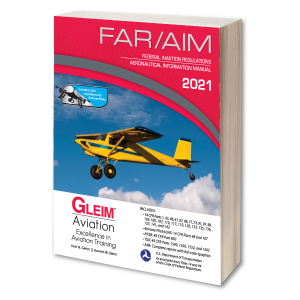 Filing a VFR flight plan and using Flight Following are excellent ways to provide an added margin of safety on all flights. Although these services are not mandatory for VFR flights, they are highly recommended. Many pilots are confused about the two services, what they provide, and are unsure of how to use them.
Filing a VFR flight plan and using Flight Following are excellent ways to provide an added margin of safety on all flights. Although these services are not mandatory for VFR flights, they are highly recommended. Many pilots are confused about the two services, what they provide, and are unsure of how to use them.
VFR Flight Plans
VFR flight plans are used to inform ATC about your planned flight. It is important to note that VFR flight plans do not provide any in-flight services, such as traffic advisories. The purpose of a flight plan is to activate search and rescue procedures if your flight plan is not closed within 30 minutes after your proposed arrival time.
The process to file, activate and close a flight plan is straightforward and simple. However, there are several methods to do so. You may file a VFR flight plan by speaking to a Flight Service Station briefer by calling 1-800-WX-BRIEF and providing the agent with the necessary information about your flight. Alternatively, you may visit 1800WXBRIEF.com and file your flight plan online. Many electronic flight bag (EFB) apps can also file flight plans. Once a VFR flight plan is filed, it will be held by Flight Service until 2 hours after the proposed departure time, unless the actual departure time is received, a revised proposed departure time is received, or Flight Service is informed that communications will be inadequate but the proposed departure time will be met.
Once you have filed your Flight Plan, you may either activate it on the ground by calling 1-800-WX-BRIEF, or in the air by communicating with a Flight Service Station over the radio. If you filed online through Flight Service, you will be emailed a link to open your flight plan using the Leidos EasyActivate service. Closing a flight Plan is just as simple, and you may do so through the same services. VFR flight plans must be closed within 30 minutes after your estimated time of arrival. They are not closed automatically. Failing to do so may activate needless search and rescue operations.
Flight Following
Flight Following, on the other hand, may be thought of as having ATC on the flight with you. ATC will monitor your flight in real time and may provide weather and airspace advisories, , assist with diversions, and traffic avoidance. Remember that the ultimate responsibility to see-and-avoid other traffic when flying in VFR conditions always rests with the pilot.
 Flight following is only available on a workload-permitting basis. If the air traffic controller is occupied with other essential tasks, you may not receive services. More often than not, flight following will be available, which will provide you with in-flight ATC services. To request flight following, contact ATC on the Departure or Center frequency. You will remain in contact with ATC until flight following is terminated. When you are in the vicinity of your destination, with the airport in sight, you should contact ATC to terminate flight following.
Flight following is only available on a workload-permitting basis. If the air traffic controller is occupied with other essential tasks, you may not receive services. More often than not, flight following will be available, which will provide you with in-flight ATC services. To request flight following, contact ATC on the Departure or Center frequency. You will remain in contact with ATC until flight following is terminated. When you are in the vicinity of your destination, with the airport in sight, you should contact ATC to terminate flight following.
To help you understand VFR flight plans and flight following, and demonstrate how to use these services in flight, please watch the informative video below.
For more information on Flight Plans and Flight Following, refer to the Aeronautical Information Manual, Chapters 5 and 6 in your Gleim FAR/AIM.

